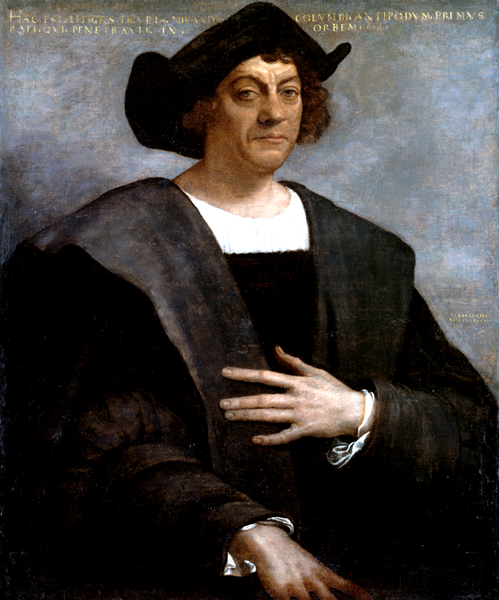Columbus Day 2013: Christopher Columbus Suffered From A Rare And Incurable Form Of Arthritis

On this day in 1492 Christopher Columbus arrived in the New World. Although much has been said about the man’s explorations, few people know the famous explorer suffered from a progressive form of arthritis from the time he was in his 40s until he died just shy of his 55th birthday.
Not only did he become nearly disabled over time due to his relapsing arthritis, which affected his lower extremities, but he also had a wound that constantly reopened and he suffered from periods of blindness due to bleeding from his eyes. Frank Arnett, M.D., professor of internal medicine and holder of the Elizabeth Bidgood Chair in Rheumatology, deduced the true state of Columbus’ health by following clues scattered throughout historical documents pertaining to the man.
Very likely, Arnett decided after much research, the symptoms began to develop upon his return home from his first voyage to the New World in 1492. Specifically, Arnett believes Columbus suffered from reactive arthritis, a rare form of the disease that affects nearly 21 million adults in the U.S. today.
What is reactive arthritis?
Dr. Hans Reiter, a German military clinician, originally described the disease in 1916 when he encountered it in a World War I soldier who developed the illness after a bout of food poisoning. Because Reiter was later convicted of war crimes for his medical experiments during World War II, clinicians now commonly refer to what was originally termed 'Reiter syndrome' as ‘reactive arthritis.’ The new name also appropriately suggests that this illness occurs as a result of a reaction. The syndrome, which causes joint pain and swelling, is in fact triggered by an infection, most often in the intestines, the genitals or the urinary tract. Although joints in the knees, ankles, and feet are the usual targets, inflammation also commonly affects the eyes, skin, and urethra.
The root cause may either be a bacterial infection, including salmonella, shigella, Yersinia, Campylobacter, or a sexually transmitted disease, such as chlamydia or syphilis. In the case of Columbus, Arnett believes the most feasible origin would have been food poisoning, which he would have contracted from meals served on ship. Arnett also suggests that Columbus may have been genetically predisposed to his illness.
The HLA-B27 gene is known to make people more susceptible to reactive arthritis. In fact, roughly 80 percent of people with the disorder have the HLA-B27 gene and, conversely, only six percent of people with the HLA-B27 gene do not have the syndrome. The disease is more common among people of Northern European descent , and Columbus was known to be tall with fair skin and blue eyes — all traits of that ethnic group. "He certainly was a candidate for having the HLA-B27 gene," Arnett told MedicineWorld.org.
Despite this genetic assumption, researchers have not yet determined why some people are more susceptible to Reiter syndrome than others. It is known that white males between the ages of 20 and 40 are at higher risk, and incidences in women are accompanied by much milder symptoms than those in men. A severe form of reactive arthritis, Arnett notes, would also explain Columbus’ crippling relapses, bleeding eyes and periods of blindness.
Reactive arthritis is neither common nor contagious, though the bacterial trigger could be passed from one person to another. There is no cure but for most people, the signs and symptoms come and go and eventually disappear within a year. To treat the syndrome, a physician would generally prescribe an antibiotic to eliminate the bacterial infection and then nonsteroidal anti-inflammatory drugs (NSAIDs), corticosteroids, or tumor necrosis factor (TNF) blockers to control the symptoms. Arnett said reactive arthritis used to be among the most prevalent forms of arthritis in young men, though since condom-use increased in the 1980s (as a result of the AIDS crisis) rates of the disease have dropped seven-fold.
"Now we only see a few cases a year," Arnett told UT-Houston Medicine. Arnett proposed his theories of Columbus illness during the University of Maryland School of Medicine’s annual historical clinicopathological conference in 2005.



























